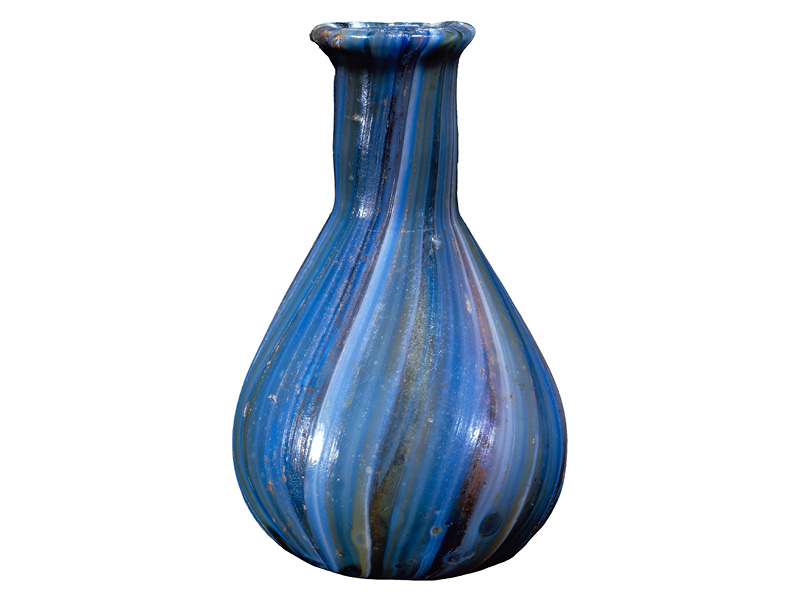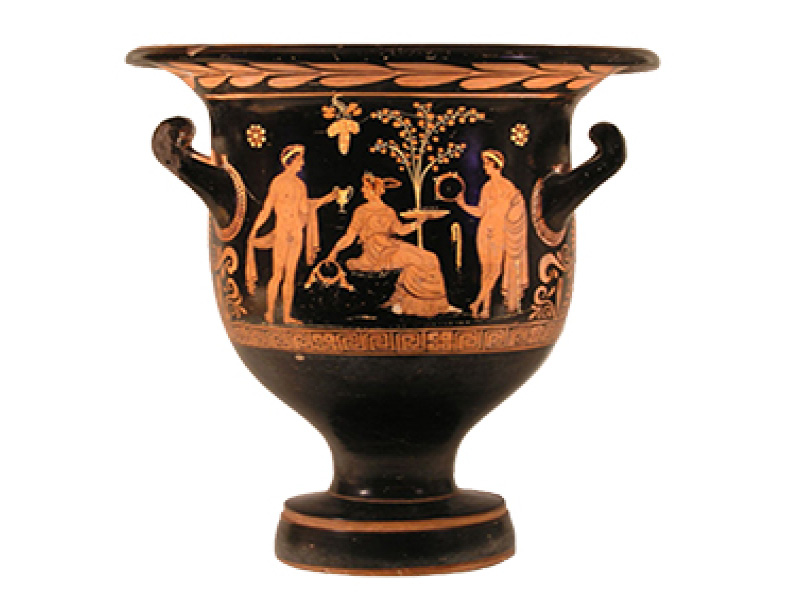Encompassing the major cultures of the ancient Mediterranean world, the Museum of Art and Archaeology’s antiquities collection is composed of approximately 8,000 objects. Though Greek and Roman art form the emphasis, ancient Egypt and the ancient Near East are also significantly represented. Less than 5% of the collection is on display at any given time, and the remainder is carefully stored. Objects in storage are brought out periodically for study and temporary exhibition.

Mosaic Glass Perfume Bottle, Roman, 1st century BCE–1st century CE, Perhaps from Italy, Multi-colored glass (2002.11), Gladys D. Weinberg Memorial Fund and Weinberg Fund

Red-Figure Bell Krater (wine mixing bowl), The Varrese Painter, Greek/South Italian, ca. 370–330 BCE, From Apulia (Italy), Pottery (62.39)
Particular strengths in the Greek and Roman collections include approximately 3,000 coins, and significant numbers of lamps, glass objects (mostly vessels), pottery vessels, terracotta figurines, and small bronzes. Roman imperial portraits and funerary monuments represent a growing collection of stone sculpture. The Near Eastern collection’s strengths include Luristan bronzes and pottery from Iran, various objects from Anatolia and Mesopotamia, and over 900 objects from the Levant, the latter attesting the Museum’s long-standing connections with the archaeology of Israel and Palestine. Additionally, a relationship with Cyprus, both through excavation and otherwise, led to the acquisition of a fine Cypriot pottery collection. A cedar coffin of a priestess, a painted linen mummy shroud, and the tombstone of a female astrologer are some exceptional examples from the Egyptian holdings.
The Museum is indebted to is founders, Saul and Gladys Weinberg, whose extensive work in classical archaeology helped to amass the bulk of the antiquities collection. The collection continues to grow today through purchased and gifted acquisitions.